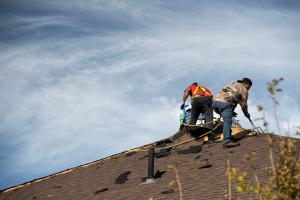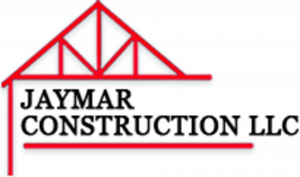When to Replace vs. Repair a Commercial Roof: Key Factors for Business Property Owners
Roofing decisions should be made based on objective analysis, not guesswork or short-term savings”
SLIDELL, LA, UNITED STATES, July 31, 2025 /EINPresswire.com/ -- Commercial roofing plays a critical role in protecting assets, ensuring business continuity, and maintaining energy efficiency. When problems arise—whether through leaks, ponding water, or storm damage—property owners must determine whether repair or full replacement is the most strategic decision. The choice affects not only cost but also long-term functionality, compliance, and maintenance cycles.— Jules Albert III
Jules Albert III, owner of Jaymar Construction LLC in Slidell, Louisiana, emphasizes the importance of timing and accurate assessment. “Roofing decisions should be made based on objective analysis, not guesswork or short-term savings,” said Albert. “Repairing a failing system can sometimes create more risk than replacing it.”
Determining whether to repair or replace a commercial roof depends on five core considerations: age of the system, severity of damage, frequency of past repairs, structural integrity, and current energy performance. Each factor provides insight into the most cost-effective and structurally sound course of action.
1. Roof Age
Most commercial roofing systems have an expected service life, depending on material type and installation quality. Single-ply membranes like TPO and EPDM may last 20–25 years, while built-up or modified bitumen roofs can range from 15–30 years. As the roof nears the end of its service life, performance begins to degrade even if no visible damage is present.
When a roof approaches its maximum lifespan and issues begin to surface, replacement typically provides more value than continued patching. Investing in a new system also brings the benefit of updated insulation and compliance with evolving building codes.
2. Damage Scope
Isolated damage—such as punctures from fallen branches, minor membrane tears, or flashing separation—can often be repaired effectively. However, widespread membrane degradation, water infiltration across large areas, or damage from hurricanes and hailstorms usually indicates the need for replacement.
A thorough inspection should document the extent of moisture penetration, membrane integrity, and substrate condition. Infrared thermography or core sampling may reveal hidden damage not visible from the surface. If a large percentage of the roof is compromised, partial repair may provide only temporary relief while masking deeper problems.
3. Frequency of Past Repairs
When a commercial roof requires repeated service within short intervals, replacement becomes the more sustainable option. A pattern of leaks, delamination, or blistering may indicate that the roofing system has reached a tipping point. Repeated repairs can disrupt operations, increase liability exposure, and end up costing more than replacement in cumulative expenses.
Property managers should maintain a record of roof service history, including repair locations, material costs, and downtime. A cost-benefit analysis comparing total repair spend versus replacement investment helps clarify the financial implications over time.
4. Structural Integrity
Roof structure and decking play a crucial role in determining repair versus replacement. Saturated insulation, deteriorated decking, or corrosion in steel components can weaken the system to the point that surface repair becomes ineffective. Water-damaged substrates must be removed and replaced to prevent mold, sagging, and eventual failure.
Structural assessments following storm events or after decades of use may reveal hidden concerns that necessitate a full tear-off. Restoring the roof’s foundational support ensures safety, especially in buildings located in coastal or high-wind zones like Southeast Louisiana.
5. Energy Performance and Code Compliance
Roofing systems also contribute to a building’s energy performance. Older systems with degraded insulation or poor reflectivity may increase heating and cooling costs. Modern membranes, cool-roof coatings, and tapered insulation improve efficiency while reducing thermal load.
Local building codes, particularly in hurricane-prone areas, continue to evolve. In some cases, repair work may trigger code upgrades—such as increased fastening patterns, uplift resistance, or energy code compliance. A full replacement allows integration of updated materials and adherence to current regulations in one coordinated project.
Making the Decision
The decision to replace or repair a commercial roof involves balancing immediate needs with long-term outcomes. In some scenarios, targeted repairs extend the life of the roof and preserve capital. In others, replacement offers better risk mitigation, operational reliability, and future-proofing.
A comprehensive inspection conducted by a licensed commercial contractor is essential. This evaluation should include drainage analysis, membrane testing, flashing condition, insulation status, and signs of trapped moisture. Photos, documentation, and a scope-of-work proposal should accompany any recommendation to ensure transparency.
In Louisiana’s Gulf Coast region—where seasonal storms, intense humidity, and fluctuating temperatures are common—the risks associated with ignoring early warning signs can escalate quickly. Timely replacement can prevent damage to inventory, tenant disruptions, insurance complications, and costly emergency service calls.
Jules Albert III of Jaymar Construction LLC notes that commercial roof replacement may also offer tax advantages under current federal depreciation rules. Under Section 179 and bonus depreciation guidelines, certain roofing investments may qualify for accelerated write-offs, improving the financial case for a proactive replacement strategy.
Conclusion
Commercial roof systems require informed decision-making and proactive management. When signs of wear begin to emerge, evaluating age, damage, repair history, structure, and energy performance can clarify whether replacement or repair provides the best path forward.
In markets like Slidell and across the Gulf South, these roofing decisions influence not only building performance but also business continuity. Choosing the right path protects long-term value and prevents avoidable disruption.
Morgan Thomas
Rhino Digital, LLC
+1 504-875-5036
email us here
Visit us on social media:
Facebook
Legal Disclaimer:
EIN Presswire provides this news content "as is" without warranty of any kind. We do not accept any responsibility or liability for the accuracy, content, images, videos, licenses, completeness, legality, or reliability of the information contained in this article. If you have any complaints or copyright issues related to this article, kindly contact the author above.


